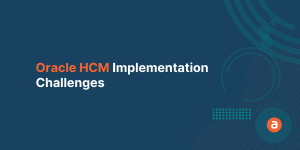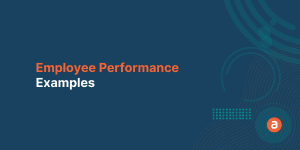Employee training is a defining investment that companies make in their workforce. An immediate new hire training goal is to provide them with the required skills, resulting in financial gain. Learning goals will not only make your employees have a great training experience, but also ensures a good pay–off for the investment made on your employees.
When you train your new hires regularly, you ensure employee productivity and better outcome. With effective learning goals in place, they know exactly what they should do to make the company excel. Research says that approximately 56% of HR Managers consider training and development is an essential business enabler.
In this post, we will cover the objectives of organizational training goals, and also you will understand how to get smart about your employee learning & training goals.
Employee training goals and objectives
Employee training goals helps you to focus on making your training program effective and successful. It helps you to keep your employees engaged, provide clear employee objectives, run your business smoothly, and achieve your organizational goals.
Having effective employee Training Needs Analysis (TNA) and training metrics are an essential part of your organizational goals. TNA helps you determine what kind of training you need to provide, and metrics help to gauge your outcomes.
The top 5 effective employee training metrics to identify employees course completion rates, assess your employee activity details, measure engagement level, identify the places of hitches, and collect feedback. Head over to our post “5 Effective Employee Training Metrics” for understanding each step in detail.
Steps of creating Employee Training Objectives
The employee training objective is a roadmap to see which areas need improvement and how to overcome them. Here are 5 innovative steps for creating an Employee Training Objective:
1. Identify Skills Gap:
Employee training has a purpose, and you should determine that purpose and outcome before allocating it to team members. You should first analyze your employee’s training needs and skills gaps. For this purpose, employers should perform a skills gap analysis and highlight the key skill sets missing in their workforce.
For 86% of HR managers, the key training goal is closing the skills gap. Skill gap analysis gives us data on what skills your employees have and what they need to improve. This step will set the direction of the employee training program and tell employers which areas they should focus on for corporate growth.
2. Define Training’s Goals Clearly:
Once you have identified the skills gap, the next step is to set the organizational training objectives and identify gaps in your current training initiatives. Employee training objectives must clearly state what you hope to accomplish with your training program and highlight the specific skills or knowledge gaps you intend to address.
Next, prioritize these gaps according to their significance and define your strategy to overcome them. This strategy will help you effectively implement the training and development program. Setting specific and measurable goals will help ensure the program’s success. For example, if the goal is to improve employee performance, you could compare team efficiency before and after individuals learn how to use new tools.
3. Obtain management buy-in:
Employee training and onboarding need a significant financial and time commitment for a large enterprise. So, if you want to design the ideal training program for your staff, including cutting-edge training programs, you’ll need buy-in from the top to ensure that everything runs smoothly.
The amount of time it takes for employees to realize the value of training programs decreases dramatically when they understand their purpose and have a clear path to follow.
4. Make your plan future-ready:
Make your workforce confident, optimistic, and ready for whatever challenges the future workplace may bring. It is increasingly important for organizations to reskill their employees to remain competitive in the marketplace and keep pace with the latest technological advancements.
Getting employees’ training goals straight makes it easier to retrain, upskill, and refine their existing skillset. In addition to enhancing employees’ abilities, your training plan must include ways to deal with unforeseen events. When done correctly, it can assist you in dealing with transformation.
Evaluate Results & Revise:
Run a test launch to pilot your training and development plan. Select a group of top-performing employees to test the new program and discover how well it works in reality. This method helps you get user input and detect any possible issues before rolling it out to the whole organization.
Collect feedback from the participants and identify areas that need further improvement. Multiple revisions will help you get the most refined version of the training program to meet your organizational needs.
Follow up after training:
Once training is complete, it is essential to follow up with employees to see how they progress. This could involve setting up regular check-ins or providing additional resources that employees can use if they need more help.
By following up after training, you can ensure that employees get the most out of the training and apply what they have learned to their job. This can be a good way for you to find ways to improve and adjust the objectives for the next training session.
Importance of Feedback in employee training:
Be straightforward and realistic with your training objectives. It’s unfair to expect major changes in the immediate days or weeks after a training session. Start small and set achievable goals that are relevant to your business. It’s extremely important to collect feedback from your employees to understand their pain points and the challenges they encounter.
Collecting employee’s feedback is essential for creating practical training objectives because it allows employees to voice their needs and contribute their ideas. This helps ensure that the objectives created are relevant to the employees.
Feedback collection involves surveying them, conducting interviews, or reviewing performance data. Businesses can better tailor their training programs to meet their employees’ needs by taking this step.
Let’s discuss the process with an example. Now, let us assume “John” who has outperformed his interview among all the attendees and got hired. John has successfully completed his onboarding sessions and now he is ready for your training. Let us see the effective way of training him. Let’s discuss the process with an example.
First things first
The first step is to perform a Training Needs Analysis.
This tells you what kind of training will be effective for John. Since there are different types of TNAs like Organizational Analysis, Individual assessment, Task-oriented analysis, and more, performing an effective Training Needs Analysis is highly important.

For example, you can do the following to create a simple and effective way TNA:
- Set your Company goals
- Identify the Knowledge, Skill & Ability needed to meet your goals
- Evaluate current employee training plan
- Leverage innovative training methods
Employee Learning Assessment
John must understand the core competency and the skills that he needs. According to the Talent Board’s Research report, 82% of organizations use pre-employment assessment tests. Try and perform some tests to identify where John stands right now.
Then, getting hands-on with the tasks that John needs to perform. Let us see with an example to understand the effective way of doing it.

For example, try and split the task into 4 modules.
Ask John to perform each module in a specific time frame. (This Timebox completion of modules allows you to get an idea of John’s competence over the other new hires). Do this for all 4 modules.
Let us say John passes in 3 and failed in the last module.
Three scenarios must be considered here.
Scenario 1:
Check for the number of failures at the organization level (say 100 new hires), if less than 30% failed in module 4, then the problem is with John.
What to do?
In this scenario, you must check the reason for failure. Go back to metrics and check whether John cleared all of them. Then, provide the appropriate training to make John complete module 4 successfully.
Scenario 2:
Let us say out of 100, almost 80% of them failed. Now, the problem might not be with John. You need to consider the number of failures here.
What to do?
In this scenario, try changing the module or make it simpler so that everyone could perform it well. Else, you can collect the feedback of all employees and try addressing that. This will increase the chances of getting a more positive outcome.
Scenario 3:
In case, out of 100 new hires, exactly 50% fail in module 4.
What to do?
This is a difficult situation because you cannot find where the problem lies (either employees or modules). Collect individual feedback and try finding the common point. Also, consider changing your training methods for module 4.
Cost vs ROI
When we speak about cost, you must consider your employee training effectiveness. Your ultimate aim is to make John complete all 4 modules successfully and get the best out of him.

For example, John is hired for $1000/month for working on 6 projects/month. You must calculate John’s effectiveness for each month and ensure he completes all the 6 projects then your Return on Investment (ROI) is on the right track.
What if John completes only 5 projects/month, or to make this worse what if 60/100 employees complete only 5 projects, then this is a serious issue that you must take care of. Else, your ROI will not meet your expectation.
Organizational goals vs Individual goals
In simple words, the Employee training goal is this – John needs to complete 4 modules.

Organization training goal – All 100 new hires must complete all modules successfully.
You must align employees’ personal goals with company goals to ensure business growth.
Note: Employee training goals must be assessed regularly. During the learning process, you must assess whether John is learning or not, and at the end of the training you must assess whether John has successfully learned whatever he needed to or not.
Leverage the perfect training tool
If you are trying hard to train your employees and are looking for an effective tool, Apty is the best choice. Apty helps you mitigate the burden that is typically placed on employees when it comes to intense training sessions by helping them learn their Enterprise software on the job, in real-time.
Now is the best time to transform your employee training with a Digital Adoption Platform like Apty.













